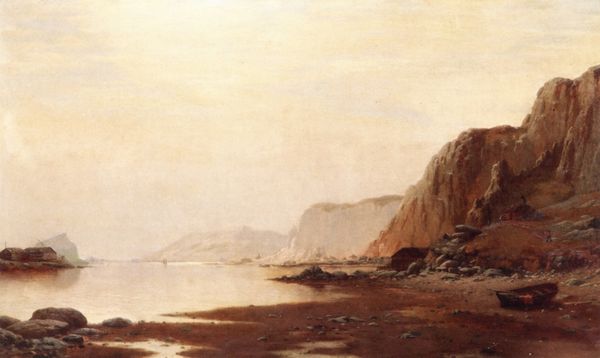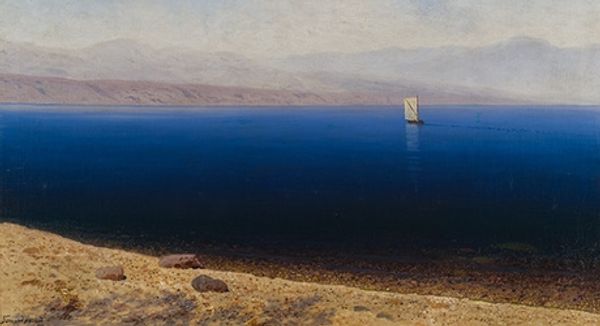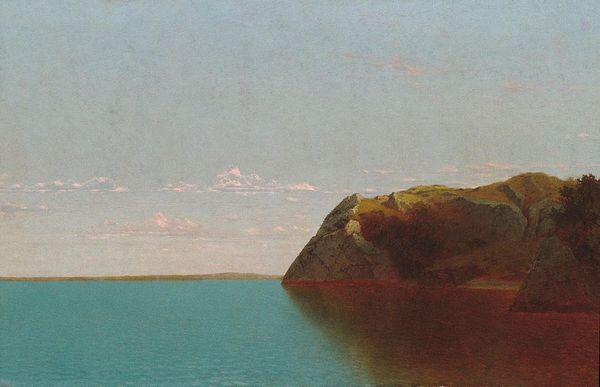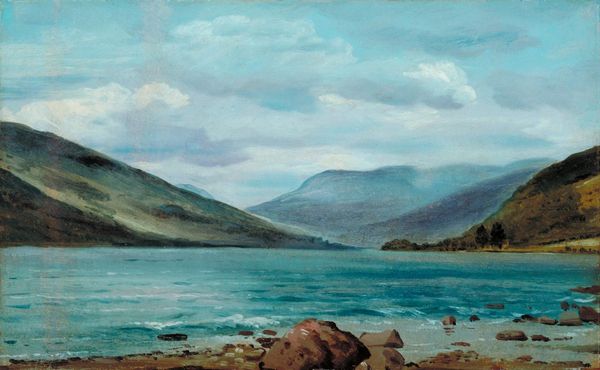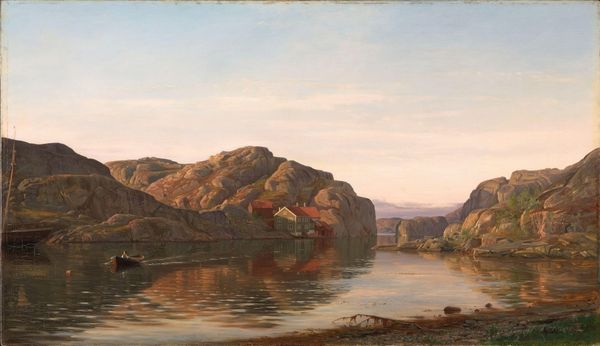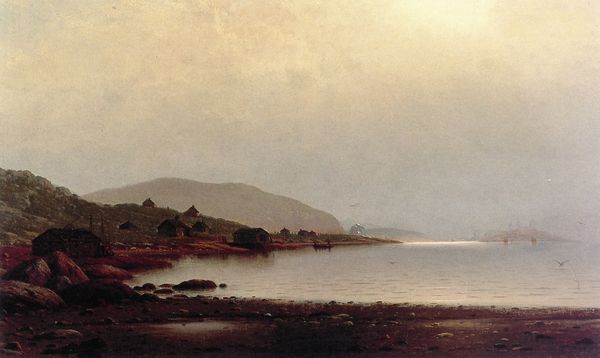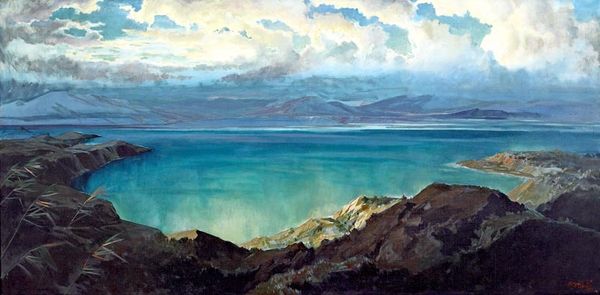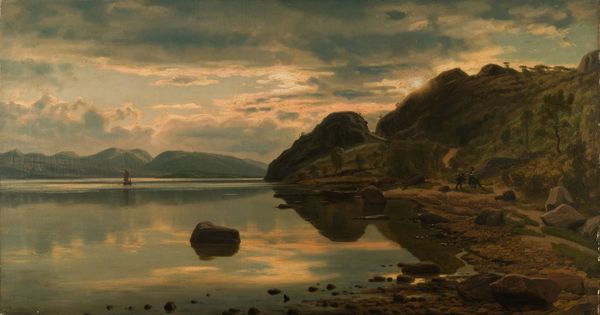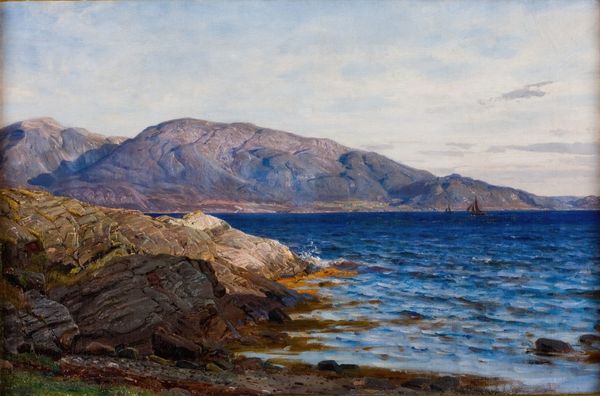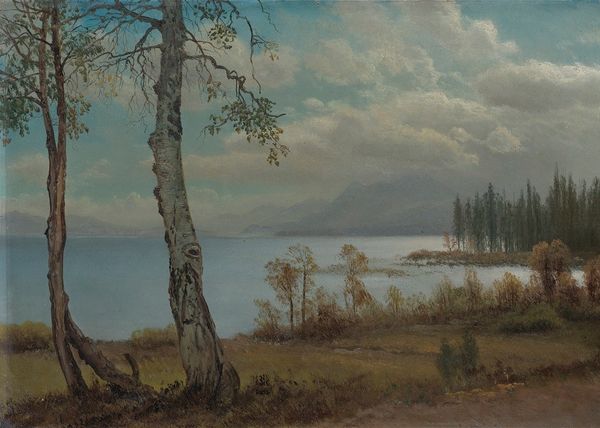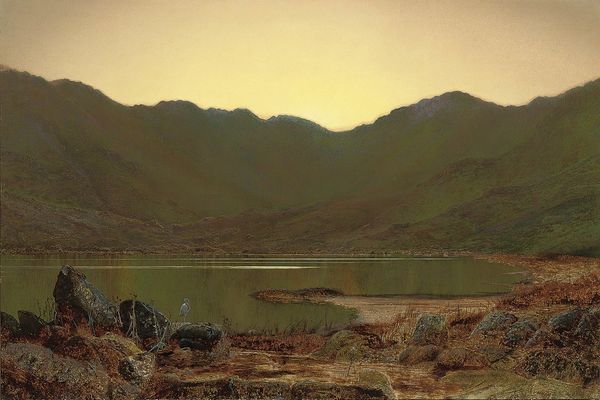
Copyright: Public domain
Editor: This is Vasily Polenov’s “At the Genisaret Lake,” painted in 1888. It's oil on canvas, and there's something so tranquil about it. The rocks in the foreground draw you into the calm waters of the lake. What do you see in this piece? Curator: For me, it's about more than just tranquility. Consider the material production of this piece. Polenov wasn't just capturing a scene; he was using pigments derived from specific locations, grinding them, mixing them with oils, applying them to a canvas stretched and prepared through a whole chain of labour. Editor: That's a good point. The labour involved in making art can easily be overlooked. Curator: Exactly! And those materials dictate the texture, the light, everything. Even the subject—a figure beside the Sea of Galilee—is framed by the physical and economic circumstances of its creation. Think about who had access to these materials, these techniques at this time in Russia. Editor: So, are you suggesting that the romantic landscape is intertwined with the socioeconomic realities of late 19th-century Russia? Curator: Precisely. It forces us to question the romanticized view of nature. Whose "nature" is being represented, and who had the means to represent it? What about the extraction of raw materials for the paints, or the cultural appropriation implicit in depicting this specific locale? Editor: That completely shifts how I see the painting! I hadn't thought about the relationship between materials and social class in creating landscapes. Curator: Thinking materially can open up new layers of meaning in seemingly simple paintings. Editor: I’ll never look at a landscape the same way again! Thanks for expanding my perspective.
Comments
No comments
Be the first to comment and join the conversation on the ultimate creative platform.
